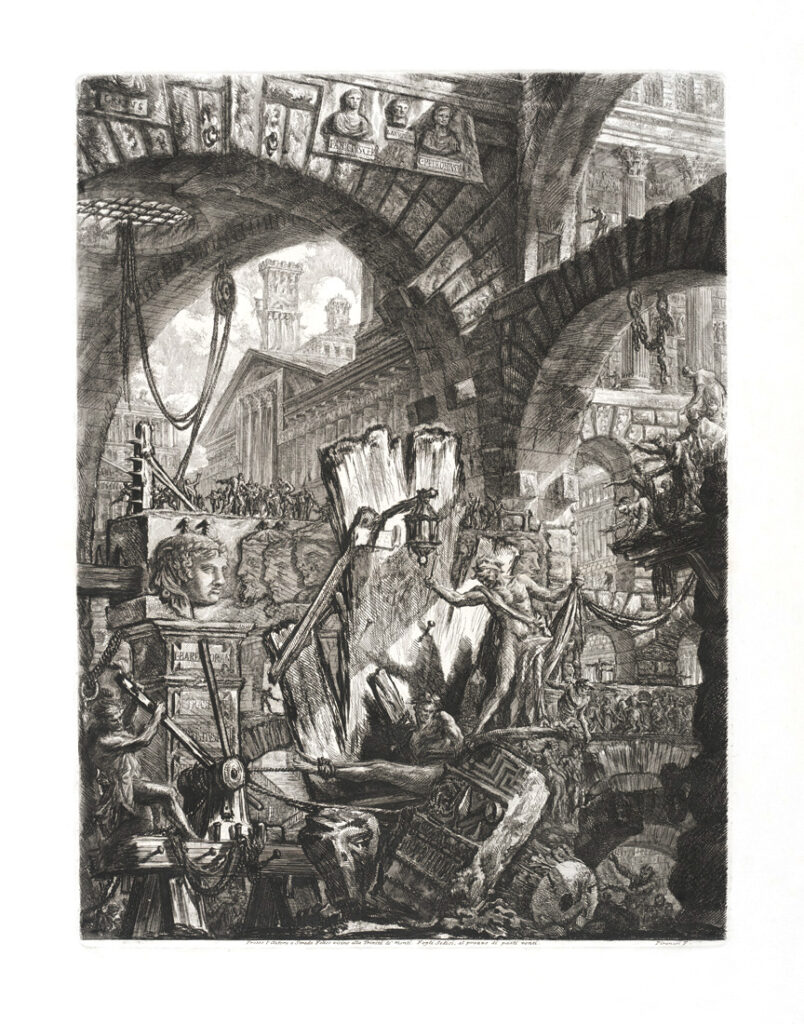Discover our exclusive collection
Over 3,000 historic giclee prints, 16 artists and 40 complete sets
Any questions?
We are more than happy to help. Just send us a message, and we will be in touch
Initially published anonymously in 1750, Piranesi reissued his collection of prison prints; Carceri d’Invenzione under his own name in 1761. For this second state Piranesi drastically revised the images and etched them much more deeply, enhancing the dramatic effect.
It is a series of 16 prints, depicting enormous subterranean vaults with stairs and mighty machines.
As with his city landscapes (Le Vedute di Roma), Piranesi’s obsession with architecture and light and shade can be seen in Carceri d’Invenzione. But the fictional settings allowed him to experiment further; bending perspective and spatial illusion to create images that are fascinating yet often bewildering to look upon.


The plates evoke immense buildings through which stairs wind endlessly and a person as a minuscule detail that becomes increasingly insignificant. The hallucinatory character of these works is enhanced by the fact that the perspective makes the scene more and more complicated and impenetrable.
In 1803, Joseph Bonaparte, Napoleon’s brother and King of Naples (from 1806-1808) and later the King of Spain (from 1808-1813), donated Piranesi’s original etchings to the Ghent library.
Our Piranesi collection gives you the opportunity to own prints created directly from the original editions of this renowned artist’s masterpieces.


With 16 black and white prints in the collection, evocative yet often chilling titles include The Man on the Rack and The Pier with Chains.
Over 3,000 historic giclee prints, 16 artists and 40 complete sets
We are more than happy to help. Just send us a message, and we will be in touch
Chambre of Commerce: 75 23 82 84
VAT: NL860202604B01
To subscribe to our newsletter and be updated about new and interesting additions to our collection, please enter your email address below.

© Heritage Prints 1992-2022 | All rights reserved